Stadium Size, Football Droppers, and Deemphasizers: Denver
This series reviews the program history and stadiums of colleges that dropped or deemphasized football.
I wrote about the Denver University's football program twice in the past:
Today's Tidbit... Denver University Football and Artwork in September 2022
Today's Tidbit... The Highs and Lows of Denver University Football in April 2023
Parts of this story overlap with those stories since the program's history has not changed since penning those stories
From its beginning, the Denver football program was an oddity. Some claim that its 1885 game with Colorado College was the first gridiron contest west of the Mississippi, an assertion that might surprise those who recall Minnesota's 1882 and 1883 teams. However, I have yet to confirm which side of Mississippi they played their games on. Still, Denver was among the earliest Western teams.
Although Denver is a not Catholic university, being isolated in Colorado, they frequently played Catholic schools of similar size and football ambitions. After Colorado exited the Mountain States Conference in 1948, Denver had enough open dates to schedule more than one soulmate in a season. That year, they played St. Mary's, Georgetown, and Detroit on successive weekends and pulled off football's Holy Trinity, going 1-1-1 in those games.
Like other schools of the time, Denver's early years included games with local high schools and multiple games per year with Colorado College, Colorado Mines, and Colorado State. The Pioneers had short periods of success and failure, managing seven conference championships and three bowl games in 75 years of gridiron play.
Denver had two campus stadiums over the years, playing at University Park from 1909 to 1924 and at Hilltop Stadium from 1925 through 1960. A 1920s crescent-shaped stadium that maximized midfield seating, DU, aka The Hilltop, sat 30,000, including the fans in the rectangular stands across the field.
Denver University was the top football attraction in the Mile High City throughout the program's life and competed with the best the Rocky Mountain states had to offer. Their last conference title and only national ranking came in 1954 under their best-known coach, Bob Blackman. Blackman led the Pioneers' wagon train in 1953 and 1954 before exiting for Dartmouth, Illinois, and Cornell.
The program struggled for the next few years and had additional balance sheet problems. Chancellor Alter announced the program's demise in January 1961, citing $100,000 per year losses and only 1,500 students among the 5,000 spectators per game. Some of those 1,500 students soon burned Alter in effigy, but the decision went unaltered.
Denver's decision to drop a major sport led to discussions about whether it could remain in the Skyline / Rocky Mountain Conference, which included Wyoming, Montana, New Mexico, Colorado State, Utah, Utah State, and BYU. (Arizona and Arizona State expressed some interest in joining.) In the end, it did not matter. More significant trends, including television and pro football, were shifting the ground underneath, and the conference fell apart after the 1962 season, with most teams heading to the Western Athletic Conference.
DU or Hilltop Stadium remained standing for a bit. The American Football League's Broncos played seven exhibitions and two regular season games there, including a 1967 exhibition game against the Detroit Lions that marked the first time an AFL team beat an NFL team. Citing the lack of investment and the need to use the land for other athletic purposes, the stadium had a date with the wrecking ball in 1971, and all signs of football on campus disappeared.
Having long followed a path unlike its Catholic brethren, Denver continued doing so in its post-football life. Whereas schools like Georgetown, Gonzaga, and Marquette have focused on basketball, Denver plays a mighty fine brand of hockey and has won ten NCAA hockey titles, more than any other school, including the 2024 crown.
2024 Concept Uniform
My brother, Steve, dabbles in sports team logos and uniforms. Here are his concept uniforms for Denver’s imaginary 2024 team.
Next up: Carnegie Mellon
Ranking by Stadium Size
Below are the schools reviewed to date, ranked by stadium size. The stadiums’ opening and demolition years (if applicable) are also noted.
Catholic (Brookland Stadium): 30,000 | 1924 - 1985
Denver (DU/Hilltop Stadium): 30,000 | 1925 - 1971
Marquette (Marquette Stadium): 24,000 | 1924 - 1977
Xavier (Corcoran Stadium): 15,000 | 1929 - 1988
Gonzaga (Gonzaga Stadium): 12,000 | 1922 - 1949
California State University, Fullerton (Titan Stadium): 10,000 | 1992 - TBD
Boston University (Nickerson Field): 10,000 | 1915 - TBD
Vermont (Centennial Field): 10,000 | 1923 - TBD
NYU (Ohio Field): 5,000 (est.) | 1897 - 1947
San Francisco (St. Ignatius Stadium): <5,000 (est.) | c. 1909 - c. 1930
Carnegie-Mellon (Skibo Bowl): 4,500 | 1960 - 1987 | Gesling Stadium: 3,900 | 1990 - TBD
Sewanee (McGee Field): 3,000 | 1891 - TBD
Schools to Review
California State University, Long Beach | University of California, Santa Barbara | Case Western | Chicago | CCNY | Creighton | DePaul | Detroit | Drake | Loyola (Chicago) | Nebraska-Omaha | Pacific | St. Louis | Santa Clara | Tampa | Washington University in St. Louis | Wichita State
Football Archaeology is reader-supported. Click here to buy one of my books or otherwise support the site.


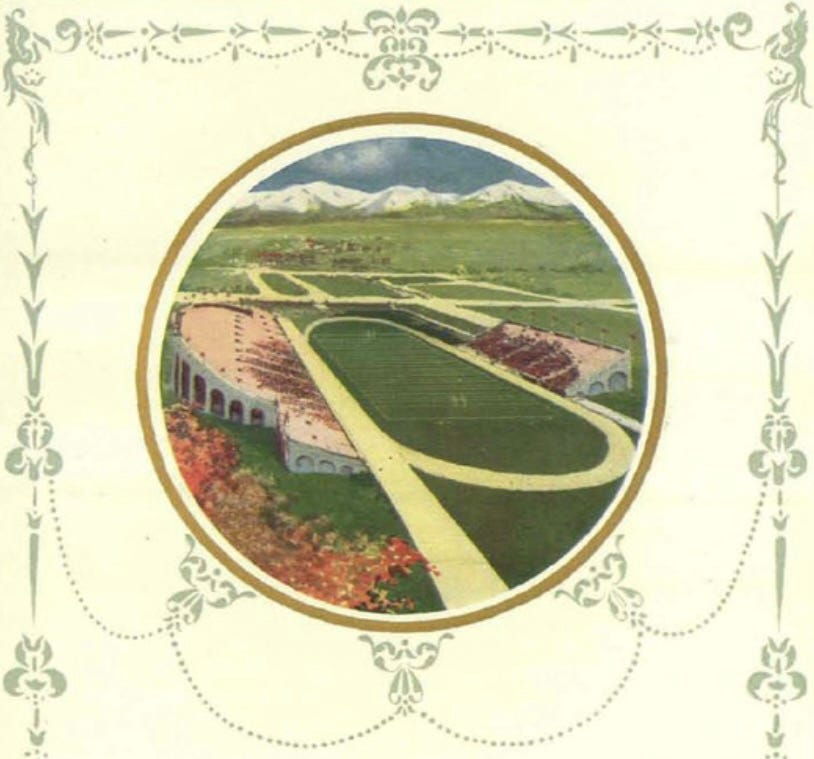
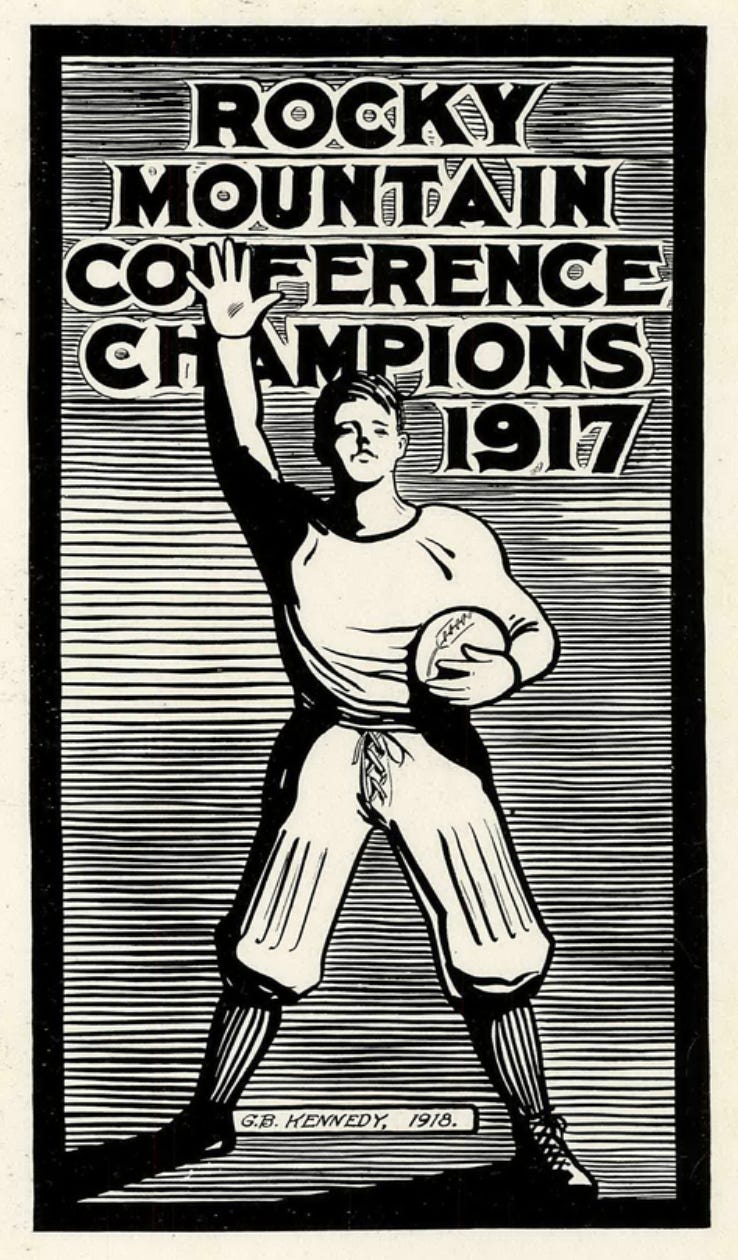
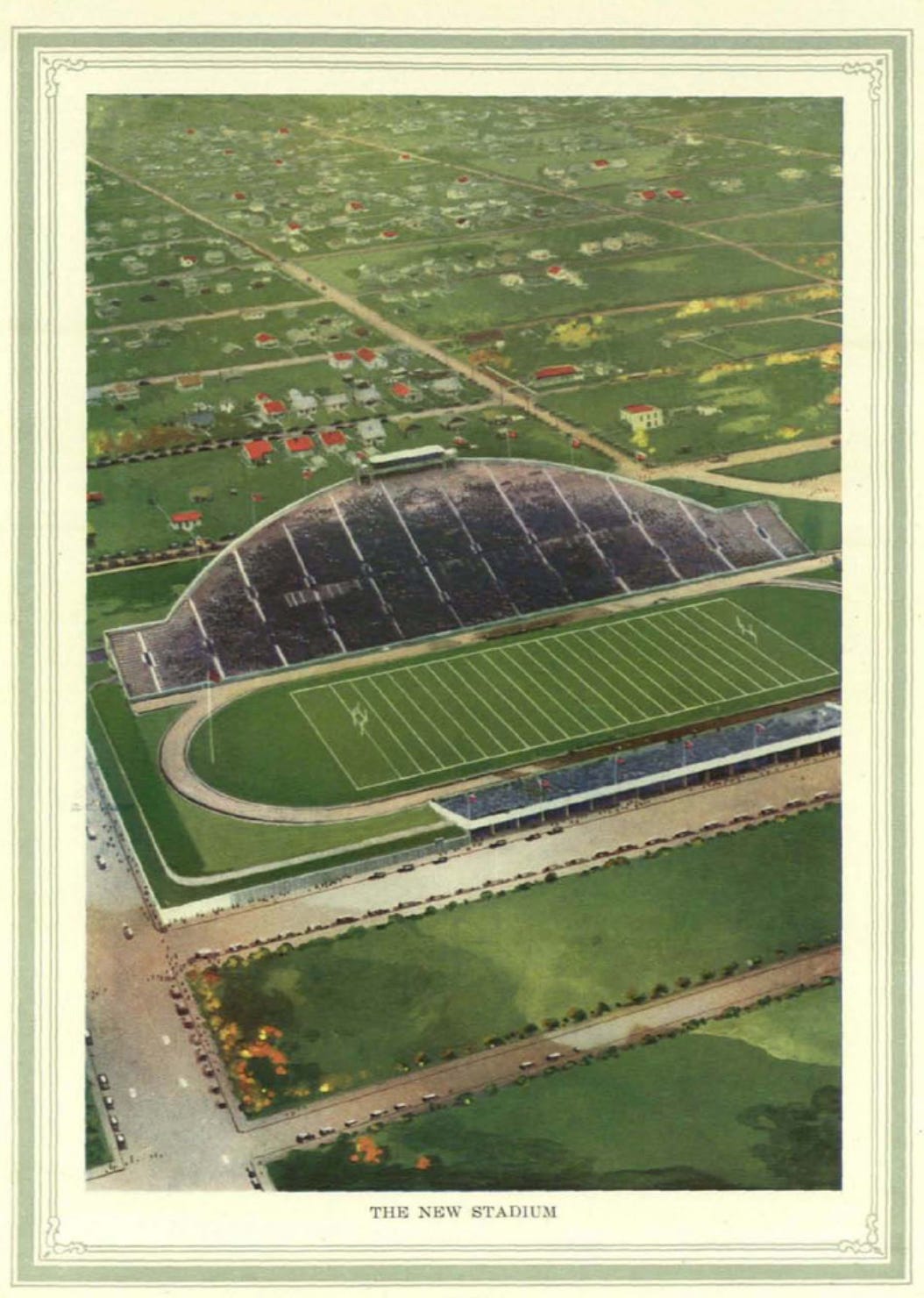
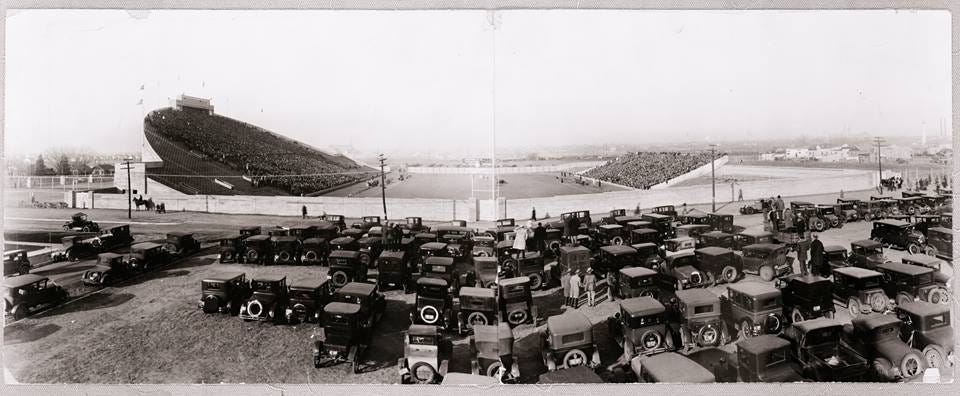
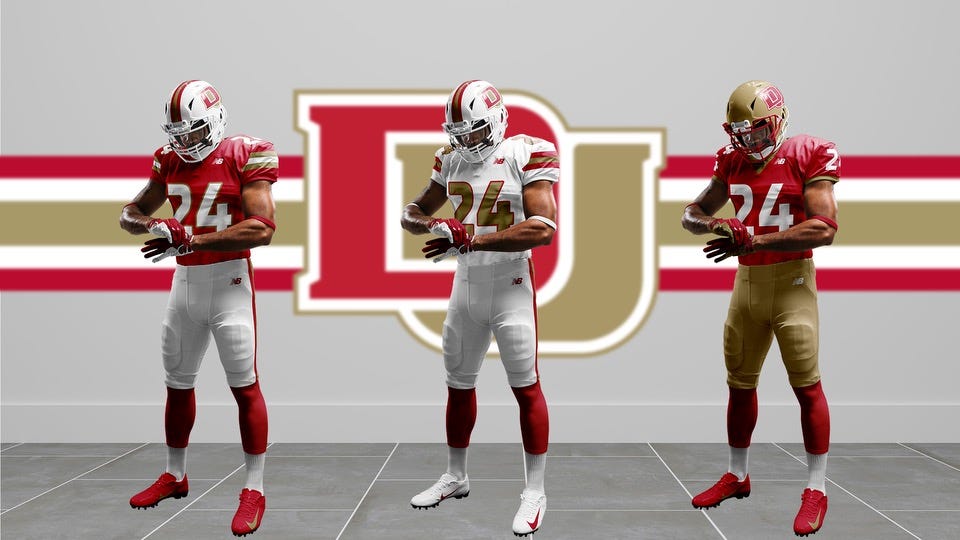
Good article. Denver’s 1926 stadium was designed by the same firm that designed the mid-1920s crescent-shaped stadiums at Brown, Cornell and Northwestern.
By the way, the University Denver was never a Catholic school. It was founded in 1864 by Methodist John Evans, the founder of Northwestern University. Denver remained a Methodist school in the early years, but today is non-sectarian.